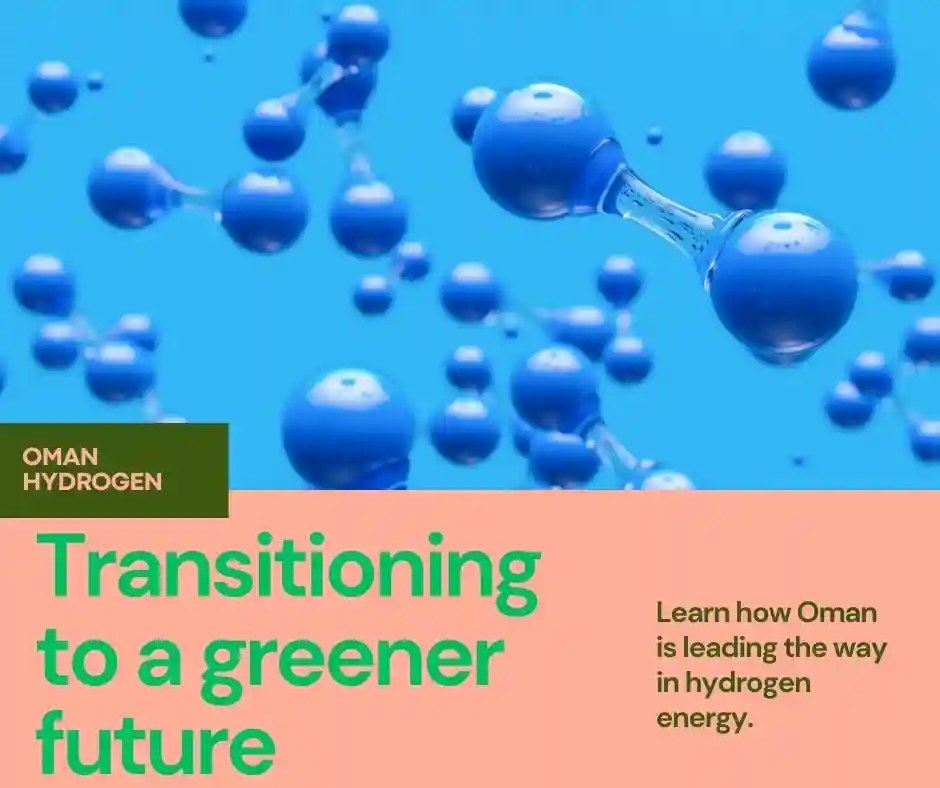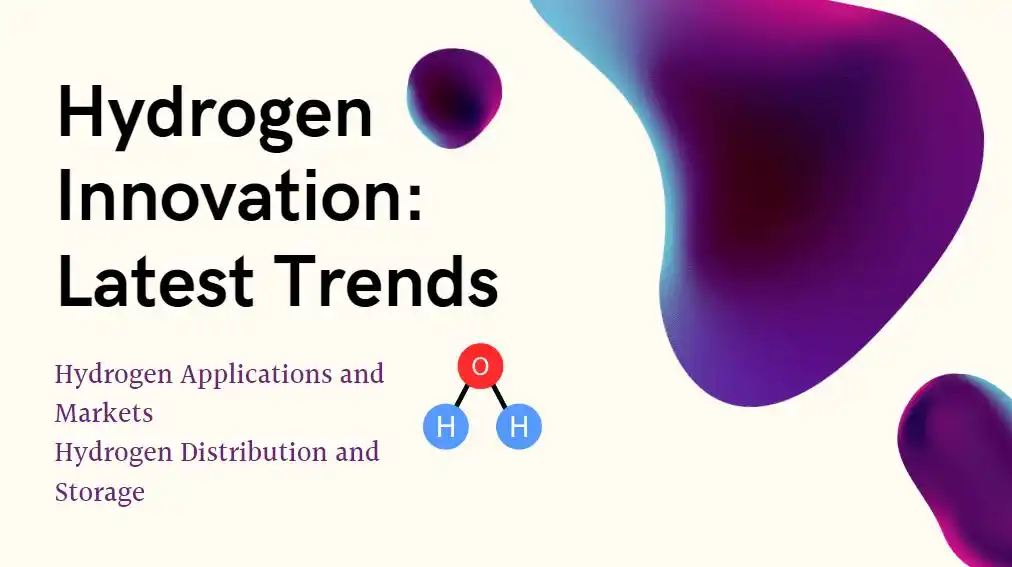Hydrogen, a clean energy source, has versatile applications. It can be produced from various sources, including gas, plants, nuclear, solar, and wind power. The color of hydrogen, which can be grey, blue, or green, depends on the source and production method. Grey hydrogen is produced from gas without capturing carbon dioxide (CO₂), while blue hydrogen is produced from gas and captures CO2. Green hydrogen is made from solar and wind power through water splitting, which does not emit any CO₂. Oman can become a powerhouse producer and exporter of green hydrogen in the region and the world. Let us understand the hydrogen transition in Oman and their plans.
Oman is aiming to achieve net zero emissions by 2050 and diversify its economy away from fossil fuels. The hydrogen transition is a key element of Oman’s energy and economic transformation. Oman has a large potential for producing and exporting green hydrogen. All thanks to its abundant solar and wind resources, vast land area, and existing oil and gas infrastructure. In this article, we discuss the benefits, challenges, and opportunities of the hydrogen transition in Oman.
Benefits of Hydrogen Transition in Oman
According to the International Energy Agency (IEA), Oman has the potential to become a leading producer and exporter of green hydrogen and ammonia by 2030. The IEA report, “Renewable Hydrogen from Oman: A Producer Economy in Transition,” highlights the benefits of green hydrogen for Oman’s economy, including investment, natural gas savings, and reduced CO₂ emissions. The report also emphasizes Oman’s ability to produce and export green hydrogen and ammonia due to its abundant solar and wind resources.
Oman also has a vast land area and existing oil and gas infrastructure. By leveraging its resources, vision, and market, Oman can overcome the challenges of cost, infrastructure, and policy and become a powerhouse producer and exporter of green hydrogen in the region and the world.

Some of the benefits of the hydrogen transition in Oman are:
Investment: Oman can attract domestic and foreign investment in the green hydrogen sector. This can create jobs, boost economic growth, and enhance technological innovation. Oman aims to invest as much as $140 billion to produce 1 million tonnes of green hydrogen per year by 2030. Also upwards of 8.5 million tonnes per year by 2050. Oman’s government-owned oil firm, OQ is heading up a consortium to develop a solar and wind-powered project capable of producing millions of tonnes of green hydrogen per year.
Natural gas savings: Oman can reduce its domestic consumption of natural gas by using green hydrogen for power generation, industry, and heating. This can free up more natural gas for export or other uses, such as blue hydrogen production with carbon capture and storage. Oman currently relies on natural gas for over 95% of its electricity generation.
Avoided CO₂ emissions: Oman can lower CO₂ by using green hydrogen instead of gas for many things. Oman can lower its greenhouse gas emissions in various sectors, such as power, transport, and industry. They can also export green hydrogen and ammonia to other countries that are seeking to decarbonize their economies, such as Japan, South Korea, and Europe. Oman has announced a target to become net zero by 2050 and to significantly reduce its fossil fuel use in its domestic energy mix.
Opportunities for Hydrogen Transition in Oman
Despite the challenges, Oman also has some opportunities to overcome them and accelerate its hydrogen transition. Some of the opportunities are:
- Resources: Oman has abundant and high-quality solar and wind resources that can be used to produce low-cost and reliable renewable electricity for green hydrogen production. Oman also has vast amounts of land for large-scale project development. Their existing oil and gas infrastructure can be used or repurposed for low-emission fuels. Oman can leverage its resources to become a global leader in green hydrogen production and export.
- Vision: Oman has a clear and ambitious vision for its energy future. They aim to become net zero by 2050 and diversify their economy away from fossil fuels. Oman has also established a state-owned company, Hydrogen Development Oman (HDO), to lead the country’s green hydrogen strategy. Oman can use its vision to guide its actions and to attract support from various stakeholders. For example, the government, the private sector, civil society, and international partners.
- Market: Oman has a large and growing market for green hydrogen, both domestically and internationally. Domestically, Oman can use green hydrogen for various applications, such as power generation, industry, and heating. Oman can also export green hydrogen and ammonia to other countries. They can sell green hydrogen and ammonia to other countries that want to have less CO₂, such as Japan, South Korea, and Europe. Oman can benefit from the increasing demand and price of green hydrogen in the global market.
Conclusion
The hydrogen transition is a key element of Oman’s energy and economic transformation. As the country aims to achieve net zero emissions by 2050, it also wants to diversify its economy away from fossil fuels. Oman has a large potential for producing and exporting green hydrogen. Thanks to its abundant solar and wind resources, vast land area, and existing oil and gas infrastructure.
Oman can also enjoy benefits from green hydrogen, such as investment, natural gas savings, and avoided CO₂ emissions. However, Oman also faces some challenges in its hydrogen transition, such as cost, infrastructure, and policy. Oman can overcome these challenges and seize the opportunities by leveraging its resources, vision, and market. Oman can become a powerhouse producer and exporter of green hydrogen in the region and the world.





